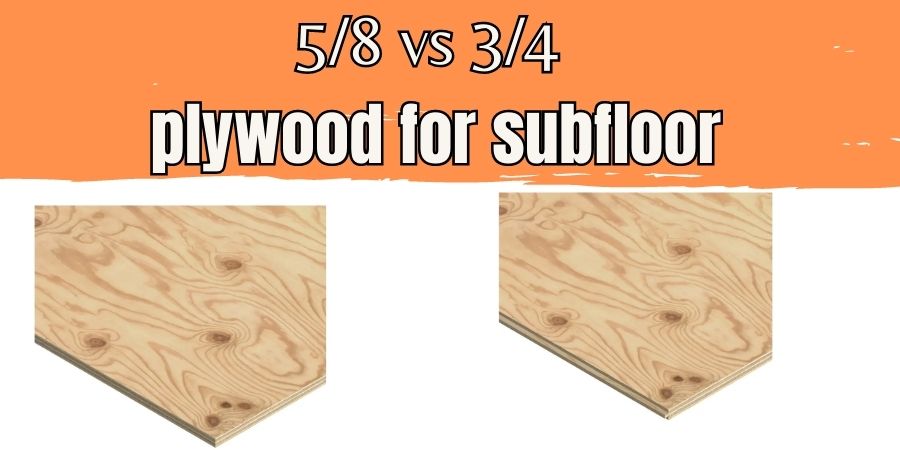Choosing the right thickness of plywood for your subfloor is important for the durability and stability of your flooring.
Both 5/8″ and 3/4″ plywood have their pros and cons, so it’s important to consider your specific needs and budget before making a decision.

plywood for subfloor
5/8″ Plywood
5/8″ plywood is a thinner and more affordable option for subflooring. It is commonly used in areas with light foot traffic, such as bedrooms or closets. It is also easier to handle and install than 3/4″ plywood.
However, it is not as strong or as durable as 3/4″ plywood and may not hold up as well in high-traffic areas.
3/4″ Plywood
3/4″ plywood is a thicker and more durable option for subflooring. It is commonly used in areas with heavy foot traffic, such as living rooms or kitchens.
It is less likely to sag or flex under weight or foot traffic, and is more resistant to moisture and wear and tear. However, it is also more expensive than 5/8″ plywood.
5/8″ Plywood vs 3/4″ Plywood- Pros and Cons
5/8″ Plywood
Pros:
- More affordable than 3/4″ plywood
- Easier to handle and install
- Suitable for areas with light foot traffic
Cons:
- Not as strong or durable as 3/4″ plywood
- May not hold up well in high-traffic areas
- May be more prone to sagging or flexing under weight or foot traffic
3/4″ Plywood
Pros:
- Thicker and more durable than 5/8″ plywood
- Less likely to sag or flex under weight or foot traffic
- More resistant to moisture and wear and tear
- Suitable for areas with heavy foot traffic
Cons:
- More expensive than 5/8″ plywood
- Heavier and more difficult to handle and install
- May not be necessary for areas with light foot traffic
Should you choose 3/4 or 5/8.
- Budget: 5/8″ plywood is generally more affordable than 3/4″ plywood, so if cost is a concern, 5/8″ plywood may be the better option.
- Foot traffic: If the area will be subject to heavy foot traffic, such as a hallway or kitchen, 3/4″ plywood may be necessary for added durability and stability.
- Moisture: If the area is prone to moisture or humidity, such as a bathroom or laundry room, 3/4″ plywood may be a better option due to its resistance to moisture.
How to choose the right thickness
The right thickness of plywood for your subfloor will depend on several factors, including the type of flooring you plan to install and the amount of foot traffic the area will receive. Here are some things to consider when choosing the best plywood thickness for your subfloor:
Flooring Type
The type of flooring you plan to install can help determine the best plywood thickness for your subfloor. For example:
- Tile: If you plan to install tile, 3/4″ plywood is generally recommended to provide a sturdy base that can support the weight of the tile and prevent cracking.
- Hardwood: If you plan to install hardwood flooring, 5/8″ plywood may be sufficient for a stable subfloor. However, if you’re installing a floating hardwood floor, 3/4″ plywood may be necessary to prevent sagging or flexing.
- Carpet or vinyl: For carpet or vinyl flooring, 5/8″ plywood is usually adequate.
Foot Traffic
The amount of foot traffic the area will receive is another important factor to consider when choosing the best plywood thickness for your subfloor. Areas with heavy foot traffic, such as hallways or kitchens, will require a thicker and more durable subfloor than areas with light foot traffic, such as closets or bedrooms.
Moisture
If the area where you plan to install your subfloor is prone to moisture, such as a bathroom or laundry room, a thicker plywood such as 3/4″ may be necessary to prevent warping or other moisture-related damage.





